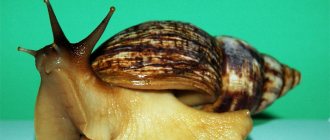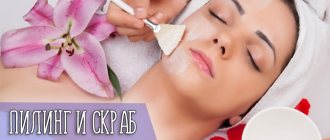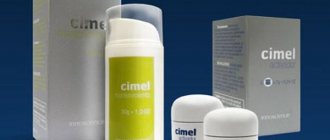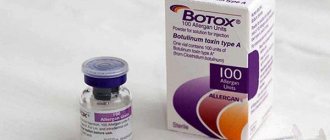The French have always been a little more adventurous than other Europeans. And when it comes to their national cuisine, the first thing that comes to mind is snails. Yes, it was the French who taught the whole world to enjoy shellfish dishes. At least, this is what most of our contemporaries think. Although in fact these gastropods were used as food back in ancient times.
The healing properties of Achatina snails for the skin
The Achatina snail is a giant gastropod that lives in tropical and subtropical countries with a hot and humid climate. Residents of Africa eat it as food and also use the mucus as a wound-healing agent.
During the Second World War, the American and Japanese military showed interest in African snails. Using them in food as easily accessible protein. For gourmets, recipes for dishes made from Achatina.
The dietary and medicinal properties of snails were highly valued during the time of Hippocrates. He used shellfish meat to treat anemia, rickets, tuberculosis and many other diseases. Hippocrates used snail mucin as the main ingredient for ointments for burns, non-healing wounds and the treatment of problem skin.
After the end of World War II, South America, Japan and Korea began to grow the Achatina snail on special farms. Dietary shellfish meat was exported to many European countries. Then snail farm workers paid attention to the wound-healing and rejuvenating effect of snail mucus.
Scientists became interested in this observation, conducted a series of studies and found that snail mucus consists of healing components that moisturize, nourish, heal and rejuvenate the skin.
What is mucin
During stress, all snails secrete a specific secretion - mucin. This viscous mucus is secreted when the mollusk is exposed to danger, when there is a change from usual conditions to unfavorable ones. The healing properties of mucin were known to the ancient Egyptians. Recipes written on ancient papyri mention giant Achatina, which was used to rub the skin of the hands and face.
Clinical studies of this substance began to be carried out only in the 20th century. Scientists have discovered in mucin:
- hyaluronic and glycolic acid;
- proteins;
- collagen;
- vitamins;
- allantoin;
- mineral salts.
In addition, mucin has hypoallergenic properties, and high-quality cosmetics containing this ingredient are absolutely safe. Now snail mucin is used in the production of cosmetics and wound healing products. Mucin is sometimes confused with the mucus secreted by the mollusk during movement in its normal state. This mucus does not have such pronounced healing properties as mucin.
Composition of Achatina snail mucus
- Collagen is a protein that maintains the elasticity and firmness of the dermis. Responsible for skin turgor.
- Allantoin is an antioxidant that binds free radicals and promotes skin rejuvenation and restoration. Prevents age-related changes in the dermis.
- Elastin is a protein that is involved in the synthesis of collagen in skin tissue. Maintains firmness and elasticity of the skin. Smoothes out wrinkles.
- Natural antibiotics are bacteriophages that protect the skin from pathogenic bacteria and various parasites. Helps treat acne.
- Natural vitamins A, B, C, E - moisturize, nourish, and care for the skin.
- Lectins are protein stickers that glue bacterial cells together and cleanse the skin. They even fight tumor cells in skin cancer.
- Glycolic acid - promotes exfoliation and cleansing of the stratum corneum of the dermis. The skin is gently cleansed of dead cells. Helps maintain electrolyte balance in the dermis.
- Fulium or solar filter - protects the skin from the harmful rays of the sun. Protects against exposure to solar radiation. Moisturizes the skin. Prevents the appearance of freckles and age spots.
Cosmetological properties of snail mucus
Achatina snail mucus not only cares for the skin, but also promotes the resorption of scars, scars and wrinkles. Effectively fights age-related skin changes, lightens age spots and freckles. The skin is tightened, moisturized, fresh and smooth.
Achatina mucin has a good healing and restorative effect on burns. Mucin relieves pain, swelling and regenerates burnt tissue. Today, more than half of the snails are grown for burn centers.
How and what kind of Achatina snails are used in cosmetology
All representatives of the Achatina family have healing and rejuvenating properties, but for cosmetic procedures they use those grown in captivity. Collecting snails from nature and using them as cosmetologists is prohibited.
Most often, Achatina fulica or Achatina reticulata are used in cosmetology; these mollusks do not require special care, are omnivorous and sociable.
Achatina snails were first used in cosmetology in Japan. This is how a new cosmetic procedure appeared - snail therapy. Cosmetologists use Achatina snail mucus as the main ingredient for skin care. Using it for masks and creams. Recipes for masks made from Achatina mucus.
The mucus is absorbed quickly by the skin and does not leave a greasy residue.
The second direction in snail therapy was Achatina massage. The snail not only massages the skin, but also cleanses it of dead cells; snail mucus promotes healing, regeneration and rejuvenation.
Terrarium construction, filling
Any transparent glass or plastic container can be used as a terrarium. At the same time, it should have a lid with ventilation holes. As many experienced shellfish owners point out, it is better to give preference to a horizontal type container. It should be taken into account that up to 10 liters of volume are needed to maintain one individual.
The terrarium should have a heating system, since Achatina loves warmth. Regardless of the season, the temperature in the terrarium should be at 26-28 degrees. For such purposes, it is better to use thermal mats that are safe to use. At the same time, it is important to control the temperature regime, since both a decrease in temperature and an increase in temperature are undesirable.
The lighting of the terrarium also plays an important role, although additional lighting at night is not necessary. It is necessary to protect the mollusks from direct sunlight, so you should never install the terrarium on a windowsill.
A layer of soil is placed at the bottom of the terrarium, in the form of a coconut substrate, which retains moisture well. The thickness of the layer depends on the size of the mollusks. Before the soil is used for its intended purpose, it is poured with boiling water, after which it must cool and dry. As an option, a top layer of pure peat, which has an acidity of 5-7 pH, is suitable.
Important nuance! A container with a large snail should be placed in places where there are no drafts or direct sunlight. In this case, it is very important that excess heat from various heating devices does not enter the container.
A number of additional elements should be placed in the terrarium, including high-quality drinkers and feeders made of soft and environmentally friendly materials. A big house and a pool wouldn't hurt. The most suitable option is to use food-grade plastic products. It is undesirable for mollusks to have either fairly hard or sharp objects in their homes, which can cause various injuries to the body. Some owners recommend planting crops in the form of lettuce or cat grass in their home. Additional accessories, such as twigs, stumps or wooden bark, will become an additional decoration for the interior of the terrarium.
Achatina snails - care and maintenance
Use of Achatina in cosmetology
Achatina snails are used in cosmetology for youthful and beautiful skin. Clam mucus is used for masks, creams, serums and medications.
Snail slime masks
The cosmetology industry offers a wide range of snail masks. They vary in price, brand and purpose. Cosmetology clinics, beauty salons and SPA centers offer a wide selection of masks with snail mucus for the care of the face and other areas of the body. But you can make a rejuvenating mask with Achatina mucin at home if you already have African snails, or you can get a couple of unpretentious cosmetology snails.
How to collect snail mucus
Before you start collecting mucus, Achatina should be washed in warm water to remove any remaining soil, excrement and food. Prepare a container and scare the snail with light, it will hide in the shell and secrete mucin. For one mask, a teaspoon of snail mucin is enough.
Snail mask at home
In the mask, you can add banana, honey, and oatmeal to the snail mucin.
The snail is washed with warm water or chamomile decoction. Then they scare and carefully collect the snail mucus. Mix with sparkling water and mix thoroughly. Apply to a clean face and leave for 20 minutes. Wash off the mask with warm water. Carrying out such procedures every other day.
Skin color improves, swelling and dark circles under the eyes go away, the skin tightens and radiates beauty and health.
Species of gastropods
There are about 90,000 species of snails, but only 3 species have gained worldwide fame: the giant African snail, the grape snail and Helix Aspersa.
African giant
Achatina, or the giant African snail, is one of the largest representatives of land mollusks. Adult representatives of this species can exceed 30 cm in length. If the external temperature drops below 2 degrees Celsius, Achatina hides in its conical-shaped house and hibernates. But on particularly hot summer days, the animal can also fall asleep, escaping from excessively high temperatures. Interestingly, in case of severe drought, African giants can sleep in the “house” for up to 3 years.
The homeland of Achatina is Africa. But biologists have noticed that these creatures feel quite well on the islands of the Caribbean and the Pacific Ocean. Meanwhile, in foreign territory, these herbivorous migrants cause a lot of trouble for agriculture. What frightens farmers even more is the fact that Achatina reproduces very quickly: one snail lays about 200 eggs each time, almost 1200 a year.
In world cuisine, Achatina meat is not considered edible. First of all, due to the high risk of becoming infected with parasites. Meanwhile, this danger does not stop the inhabitants of Africa. They eat Achatina themselves and sell the meat of giant mollusks to tourists.
French delicacy
But one that does not require any special introduction is the grape or garden snail (Helix Pomatia). It is this species that is most often found in our gardens, orchards, and parks. And it is these gastropods that are the hallmark of French cuisine. It is Helix Pomatia that gourmets eat with gusto in the best restaurants in Europe, calling them Roman or Burgundy snails.
The largest populations of grape clams have been seen in Austria, Belgium, Germany, Romania, Spain, Ukraine, Great Britain, Luxembourg and several other countries on the continent. Meanwhile, these edible snails, being very unpretentious, are already successfully colonizing the countries of Asia, Africa, Oceania and America. For a comfortable life, they need moderate sun and high humidity.
Helix Aspersa
This type of snail is one of the most famous in Europe. On the one hand, Helix Aspersa has earned the reputation of a garden pest, and on the other hand, it is revered as a mollusk with important healing properties. Their yellow or cream shells rarely exceed 3-4 cm. Previously, Helix Aspersa was difficult to find outside their natural range (Western Europe, North Africa, Middle East). But recently, these gastropods have been actively exploring the territories of the USA, Canada, Mexico, Argentina, Chile, South Africa, and New Zealand, where they are believed to have arrived along with cargo transportation. One Helix Aspersa lays about 500 eggs per year.
This type of snail is also considered edible. However, Helix Aspersa gained its main popularity and application in the field of cosmetology.
Massage with Achatina
During a massage, the effect of the snail on the skin is multifaceted. Achatina massages the skin during its movement, cleanses and heals. Snail massage is performed in beauty salons and beauty centers, but it can also be done at home.
Achatina massage at home
The snails are washed with warm water. A clean face is smeared with milk or cucumber juice and mollusks are seated on it. They move slowly and cover the skin with mucus. After 15 minutes, the snails are removed, and the mucus is carefully beaten into the skin. After 10 minutes, wipe the face with warm milk or a decoction of herbs. The procedure is carried out every other day, the results are noticeable after the first session.
After the procedure, there remains a slight redness on the skin, which is characteristic of peeling. Therefore, massage with Achatina is not recommended in the summer, as age spots may appear.
general characteristics
Snails can be found, perhaps, in any corner of the planet, and in terms of the number of species they are second only to insects. They belong to the class Gastropods, which includes land snails, freshwater snails, sea snails and slugs. Their ancestors are among the most ancient species of the animal world. Archaeologists say that the first gastropods lived on our planet 500 million years ago.
Representatives of gastropods are able to adapt to a wide variety of living conditions. They don't require much food. Slugs differ from snails only in that they lack an exoskeleton (“house”). Representatives of different species of land snails can differ significantly from each other, in particular in size. Some representatives of the species do not even reach 10 mm, while giant individuals live on the African continent - more than 30 cm.
Most snails move very slowly - about 1 mm per second, leaving behind a trail of mucus. It is thanks to mucus that gastropods are able to move on almost any surface without damaging themselves. They are completely deprived of hearing, but their vision and acute sense of smell, which is the main thing for these animals, allow them to navigate the terrain. The snail’s “house” “grows” with it and finally hardens when the gastropod reaches adulthood.
Another unique thing about these animals is that they are hermaphrodites. That is, each snail combines male and female genital organs, and after mating, both partners lay eggs.
The average lifespan of gastropods varies from 2 to 7 years. But in captivity they can reach 15 years of age (some can live for almost a quarter of a century).
Treatment of psoriasis with Achatina
Snail mucus has a beneficial effect on skin damaged by psoriasis. If you suffer from this disease, get some Achatina. Watching snails helps to relax the nervous system and relieve stress after a hard day. Cosmetologists recommend applying Achatina daily to skin with psoriasis rashes.
Massage with snails helps to make it less dry and flaky. Achatina mucus promotes skin regeneration. If you find it unpleasant to feel the snail on your skin, then collect its mucin and rub it into the damaged skin. Of course, treatment of psoriasis with Achatina snails is long-term and not always effective.
Cosmetologists about Achatina
African snails have made a splash in the field of aesthetic cosmetology. Snail massage fights stretch marks, rough scars, warts and scars. In several sessions of snail therapy, a positive and long-term effect is achieved.
Cosmetologists never cease to admire the magical properties of snail mucin, which helps smooth out wrinkles, stops and reverses age-related changes in the skin.
What do Achatina snails treat?
- Tightens and rejuvenates the skin;
- Improves complexion, swelling and dark circles under the eyes go away;
- Blood circulation in the skin improves, small vessels are strengthened;
- The firmness and elasticity of the dermis is restored;
- Acne, pimples, dermatitis, eczema and psoriasis go away;
- Scars, scars on the skin, freckles and age spots are smoothed out and lightened;
- Protect the skin from solar radiation, pathogenic bacteria and fungi.
Who are Achatina?
This species is known as giant African snails. Their shell is yellowish in color, the length of the shell is up to 37 cm, and they weigh up to 450 grams. The female can lay a huge number of eggs. The clutch contains up to 500 miniature eggs.
These creatures breathe through their skin. But they have no hearing. The lifespan of snails in comfortable conditions can be up to 10 years. Growth continues in mollusks throughout their lives. An interesting trait is their intelligence. The creatures get used to their owners quite quickly.











